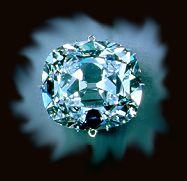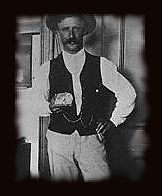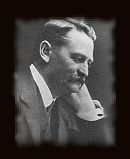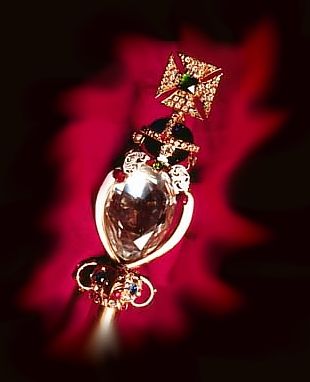|
Home | The Diamond | Our Mission | Forum | About Us | Status Report
|
|
|
| On January 26, 1905, the mine superintendent thought he was the brunt of a practical joke. While making a routine check of the premises at the end of the day, Frederick Wells caught the reflection of the setting sun glimmering off the wall of the mine shaft. Upon closer inspection, he discovered a magnificent stone. Afraid of being teased by his peers, he had the gem checked privately before taking it to the manager's office. |
|
| Within hours, he found out that he had uncovered the largest diamond ever - 3,106 carats in the rough and weighing just under one and a half pounds. It was notable for its exquisite color and exceptional purity. | |
| The stone possessed a surprisingly smooth cleavage face on one side, leading many experts to believe that the huge stone was only a piece of a larger diamond that was broken up in the weathering process. Wells made history - and $10,000 - for his discovery. The diamond was named after Sir Thomas Cullinan, the chairman of the diamond company which excavated the stone. |
|
|
The Transvaal Government bought the diamond rough for $750,000. In 1907 it was presented to the reigning king of England, King Edward VII, on his 66th birthday. The next year, King Edward sent the stone to Asscher's Diamond Co. in Amsterdam for cutting. The diamond rough was insured for $1,250,000. A heavy steel blade shattered on the first attempt to cut the diamond. On the second attempt the diamond successfully fell apart. It was reported that the diamond cutter fainted. |
|
|
|
|
|
Following months of exacting study, the rough stone was cleaved into nine major gems and 96 smaller gems and 9 1/2 carats of unpolished
pieces. Much of the weight of the stone was lost to the cutting process. The total cut weight of the stones represented only
about 35% of its original weight. Four of the biggest stones are the
following: |
|
|
Cullinan I (The Star of Africa) |
|
|
|
It is a magnificent pear-shaped diamond of 530.20 carats with 74 facets. Until recently, the largest cut diamond in the world. (That record is now held by the Unnamed Brown, a golden brown cushion shape diamond weighing 545.67 carats.) King Edward called it The Great Star of Africa and ordered it to be set in the British Imperial Scepter, which had to be redesigned to accommodate it. The Scepter is on permanent display in the Tower of London. |
|
Cullinan II (The Lesser Star of Africa) |
|

|
It is a cushion-cut brilliant of 317.40 carats, the fourth - largest cut diamond in the world. It was set in the brow of the British Imperial State Crown, on display in the Tower of London. |
|
Cullinan III |
|
| This pear-shaped diamond weighs 94.40 carat, placed
on Queen Mary's Crown.
|
|
|
Cullinan IV |
|
| The 63.60 carat Square Diamond is set in the band of Queen Mary's Crown. | |




